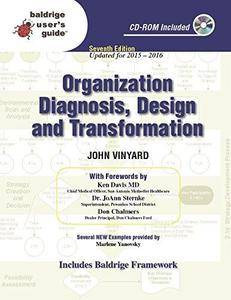Organization Diagnosis, Design, and Transformation: Baldrige Users Guide By John Vinyard
2015 | 674 Pages | ISBN: 0873899113 | PDF | 26 MB
2015 | 674 Pages | ISBN: 0873899113 | PDF | 26 MB
This book is written to address the most detailed level of the Baldrige Criteria for Performance Excellence (CPE) the 42 Areas to Address. It is organized into five parts and is designed to help leaders and organization architects understand: (1) the fundamentals or key design concepts of performance excellence; (2) their organization s unique context as it relates to the design of organization systems and a comprehensive scorecard; (3) organization systems including strategic leadership, execution excellence and organizational learning and support systems; (4) the organization scorecard including comparisons to other world class organizations; and (5) the path to performance excellence including organization diagnosis, design, and transformation. Each section begins with a foundation which is an introduction to the basics of the particular area to address. This is a common-sense description of what the CPE questions in the particular area to address are asking. Following the foundation, a mix of business, healthcare, and education examples are included to help bring alive the key elements of the particular areas to address. These tangible, real-world examples are included courtesy of the individual Baldrige Award recipients and other world-class organizations. "Fill-in-the-blank" worksheets are provided to help writers and assessors collect and organize information about the organization s context, systems, and scorecard. Completing these worksheets will help the writing team develop responses to the CPE in the form of an award application. After the team has filled in the worksheets, assessment questions are provided to help the team quickly take the temperature" of the organization by providing a rough estimate score. The blueprints provide a "visual version" of the CPE. These flowchart-style diagrams depict the logic flow and relationships of the elements found in the particular area to address as well as linkages to other CPE areas to address (context, systems, and scorecard). The system integration section supports the blueprints by describing the nature of the relationships (linkages) to other areas to address. This section provides descriptions of the linkages depicted in the blueprint and their relationships to other CPE areas (context, systems, and scorecard). Thoughts for leaders are included for each section and typically use brief anecdotes to bring the concepts alive for the leaders of the organization. In some cases, they provide leaders a view of why this portion of the criteria should be important to them



